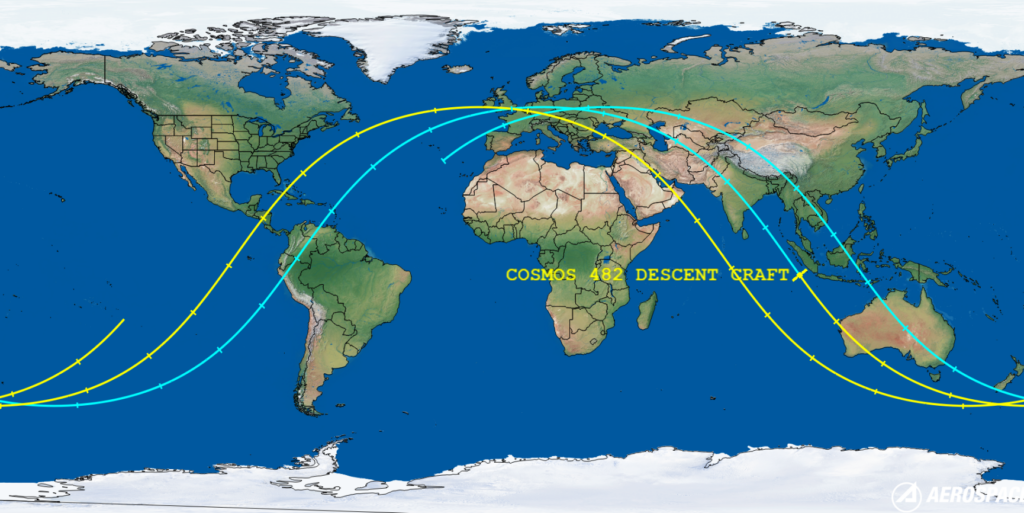
Roscosmos, the Russian equivalent of the U.S.’s NASA organization, released a statement today confirming that a spacecraft forecast to crash today did in fact crash back on Earth. The aircraft is known as Cosmos-482 in the U.S. and known as Kosmos-482 in Russia.
“Launched in 1972, the Kosmos-482 spacecraft ceased to exist, falling out of orbit and crashing into the Indian Ocean. The descent of the device was controlled by the Automated Warning System for Hazardous Situations in Near-Earth Space. According to calculations by specialists from TsNIIMash (part of Roscosmos), the device entered the dense layers of the atmosphere at 9:24 Moscow time, 560 km west of Middle Andaman Island, and fell in the Indian Ocean west of Jakarta.
The spacecraft was launched in the spring of 1972 to study Venus, but due to a malfunction in the booster block, it remained in a high elliptical orbit of the Earth, gradually approaching the planet.”

Unlike most debris re-entering the Earth’s orbit which burns up upon interacting with the planet’s dense atmosphere, this spacecraft is hardened and was expected to crash into Earth as a whole object. While odds were that the space craft would impact water since much of the Earth’s surface is covered by it, there was concern it would impact a populated area on land.
According to a forecast issued by Aerospace Corporation, had the spacecraft remained in space for just a few minutes longer, the eastern United States could have been impacted by the failed spacecraft.
The former Soviet Union’s Cosmos 482 was launched back in 1972. Unfortunately, due to a mishap after launch, the payload of that mission were were marooned in Earth orbit, specifically the spacecraft’s lander capsule intended to parachute onto the surface of Venus. This landing module, which weighs 1,091 pounds, is highly probable to reach the surface of Earth in one piece as it was designed to withstand 300 G’s of acceleration and 100 atmospheres of pressure for its original mission to Venus. Other components from the doomed mission made its way back to Earth in the days after the March 1972 launch; the payload separated into four pieces shortly after launch, several of which reentered over New Zealand on April 3 just three days after launch.
On average, 100-200 tons of space junk re-enter the Earth’s atmosphere in an uncontrolled manner every year. While most of the objects are small and harmless and do burn-up prior to reaching the Earth’s surface, large objects like this spacecraft from the former Soviet Union can bring harm to the surface if they survive re-entry.
If a rocket or spacecraft were to create damage in another country, there are international treaties in place that would make the launching country potentially liable for damages. That happened in 1978 when a Soviet reconnaissance satellite Kosmos 954 made an uncontrolled re-entry into Earth’s atmosphere over Canada. Debris eventually crashed into Canada’s Northwest Territories, depositing toxic waste into the soil at the crash site. Citing the the 1967 Outer Space Treaty and 1972 Space Liability Convention, the Canadian government decided to use the Liability Convention to make the U.S.S.R. pay for damages. After a period of negotiation, the Soviet Union agreed to pay Canada 6 million Canadian dollars for damage. However, it is unclear whether the full amount was ever paid.